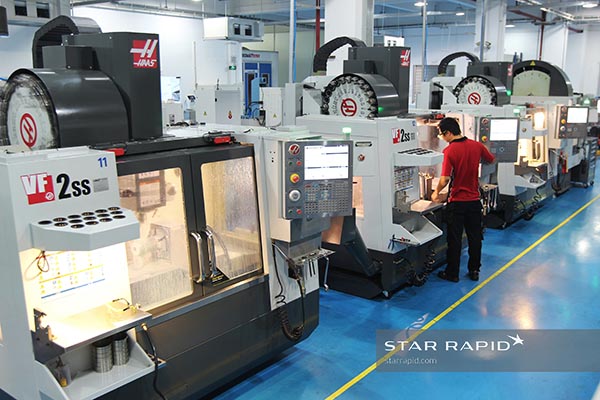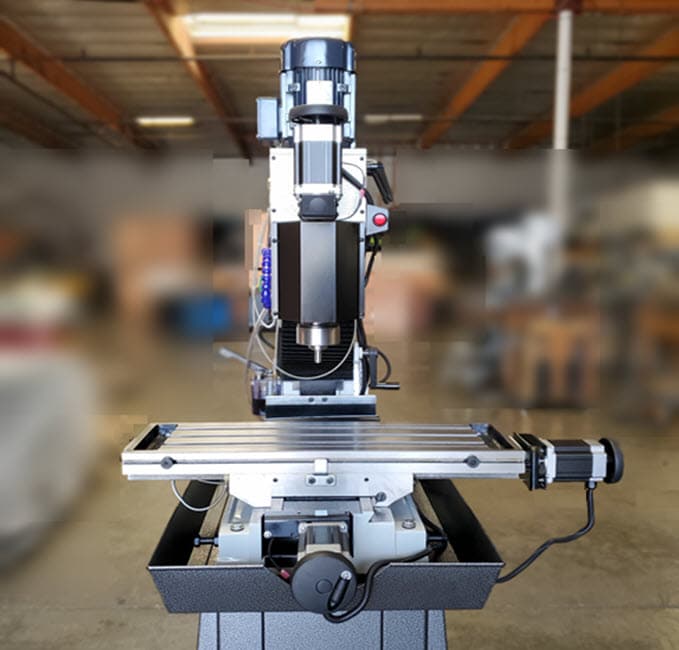Table of Contents
- Frequently Asked Questions
- Can CNC vertical mills create chamfers?
- What types of chamfers can be created with a CNC vertical mill?
- What are the advantages of creating chamfers with a CNC vertical mill?
- What factors should be considered when creating chamfers with a CNC vertical mill?
- What are some applications of chamfers created with a CNC vertical mill?
CNC vertical mills are a popular choice for manufacturers who want to create precise and complex shapes with ease. However, one question that often arises is whether or not these machines are capable of creating chamfers. Chamfers are angled edges that can be added to a part to improve its functionality or aesthetics. In this article, we will explore whether or not CNC vertical mills can create chamfers and what factors to consider when attempting to do so. So, let’s dive in and find out!
Can CNC Vertical Mills Create Chamfers?
When it comes to manufacturing, CNC vertical mills are a popular choice due to their precision and versatility. One question that often arises is whether these machines are capable of creating chamfers. In this article, we will explore the answer to this question in detail.
What are Chamfers?
Before we dive into the main topic, let’s first understand what chamfers are. In simple terms, chamfers are angled cuts made on the corners of a workpiece. They are used for a variety of purposes such as aesthetics, safety, and functionality. Chamfers can be created manually using hand tools or with the help of machines like CNC vertical mills.
When it comes to CNC machining, chamfers are typically created using special tools called chamfer mills. These mills come in various sizes and angles, allowing for precise chamfering of different workpiece materials and shapes.
The Capability of CNC Vertical Mills to Create Chamfers
Now, let’s get to the main question – can CNC vertical mills create chamfers? The answer is a resounding yes! In fact, CNC vertical mills are one of the best machines for creating chamfers due to their high precision and accuracy.
To create chamfers on a CNC vertical mill, a chamfer mill is installed on the machine’s spindle. The chamfer mill is then programmed to move along the edges of the workpiece, creating precise angled cuts as per the design specifications. The process is automated, which means that the chamfering is done quickly, accurately, and consistently.
The Benefits of Using CNC Vertical Mills for Chamfering
There are several benefits of using CNC vertical mills for chamfering. Some of these benefits include:
- Precision: CNC vertical mills are known for their high precision, which means that chamfers created using these machines are accurate and consistent.
- Efficiency: Chamfering using CNC vertical mills is much faster and more efficient than manual chamfering, which can be time-consuming and error-prone.
- Versatility: CNC vertical mills can be used to chamfer a wide range of workpiece materials and shapes, making them a versatile option for manufacturers.
- Cleanliness: Chamfering using CNC vertical mills produces clean and precise cuts, which means that there is less waste and material loss.
CNC Vertical Mills vs. Other Methods of Chamfering
While CNC vertical mills are a great option for chamfering, there are other methods available as well. Let’s compare CNC vertical mills with some of these methods:
- Manual Chamfering: As mentioned earlier, manual chamfering is a time-consuming and error-prone process. It also lacks the precision and consistency of CNC vertical mills.
- Handheld Chamfering Tools: Handheld chamfering tools are portable and easy to use, but they are not as precise or efficient as CNC vertical mills.
- Other CNC Machines: While other CNC machines like lathes and routers can be used for chamfering, CNC vertical mills are still the best option due to their vertical spindle orientation, which allows for precise and consistent chamfering.
Conclusion
In conclusion, CNC vertical mills are capable of creating chamfers with high precision and efficiency. They are a versatile option that can be used to chamfer a wide range of workpiece materials and shapes. If you are a manufacturer looking for a reliable and efficient way to chamfer your workpieces, CNC vertical mills are definitely worth considering.
Frequently Asked Questions
Here are some common questions and answers about whether CNC vertical mills can create chamfers.
Can CNC vertical mills create chamfers?
Yes, CNC vertical mills can create chamfers. Chamfers are an angled cut at the edge of a workpiece that is often used to make it easier to insert or join with another part. CNC vertical mills are equipped with cutting tools that can be programmed to make chamfers to specific dimensions and angles.
The process of creating a chamfer on a CNC vertical mill involves setting up the machine with the appropriate cutting tool and programming the toolpath to make the desired cut. The toolpath will specify the location, depth, and angle of the chamfer, and the machine will execute the cut automatically.
What types of chamfers can be created with a CNC vertical mill?
CNC vertical mills can create a variety of chamfer types, including straight chamfers, angled chamfers, and rounded chamfers. The type of chamfer that can be created depends on the cutting tool used and the programming of the machine. Specialized chamfer tools can be used to create more complex chamfer shapes.
When programming the CNC vertical mill to create a chamfer, it is important to consider the material being cut and the purpose of the chamfer. Different materials may require different cutting speeds and feeds, and the chamfer may need to be designed to provide a certain level of strength or fit with other parts.
What are the advantages of creating chamfers with a CNC vertical mill?
The advantages of creating chamfers with a CNC vertical mill include precision, consistency, and efficiency. CNC vertical mills can be programmed to create chamfers to exact dimensions and angles, ensuring a high level of accuracy and consistency from part to part. The automated process of the CNC machine also allows for faster and more efficient production of chamfers compared to manual methods.
In addition, CNC vertical mills can create chamfers in a variety of materials, including metal, plastic, and wood, making them a versatile tool for manufacturing and fabrication applications.
What factors should be considered when creating chamfers with a CNC vertical mill?
Several factors should be considered when creating chamfers with a CNC vertical mill, including the material being cut, the size and shape of the workpiece, the desired chamfer dimensions and angles, and the cutting tool being used. It is important to choose the appropriate cutting tool and programming parameters for the specific application to ensure a high-quality chamfer.
Other factors to consider include the machine setup and maintenance, as well as safety considerations for operators and other personnel working in the area. Proper training and safety protocols should be followed to ensure safe and efficient operation of the CNC vertical mill.
What are some applications of chamfers created with a CNC vertical mill?
Chamfers created with a CNC vertical mill can be used in a variety of applications, including aerospace, automotive, medical device manufacturing, and electronics. Chamfers are often used to improve the fit and function of parts that need to be joined together, such as gears, bearings, and fasteners.
Chamfers can also be used for aesthetic purposes, such as creating a more polished or decorative edge on a workpiece. In some cases, chamfers may be required for safety reasons, such as to prevent sharp edges that could cause injury to operators or end-users.
In conclusion, CNC vertical mills are capable of creating chamfers. With their precision and accuracy, these machines can produce consistent and high-quality chamfers on a variety of materials. However, it is important to note that the process requires careful setup and programming to ensure the desired results are achieved.
Furthermore, while CNC vertical mills are versatile and efficient machines, they are not the only option available for creating chamfers. Other tools such as manual milling machines and hand tools can also be used, depending on the specific requirements of the job.
Ultimately, the choice of tool and technique will depend on a variety of factors, including the material being worked on, the level of precision required, and the expertise of the operator. With the right equipment and skills, however, it is possible to achieve excellent results with CNC vertical mills and other tools.
Request a quote today!
[contact-form-7 id="1578" title="Contact form"]
Please compress the file into a ZIP or RAR file before uploading. Alternatively, send through your RFQ by email.
enquires@unitymanufacture.com





